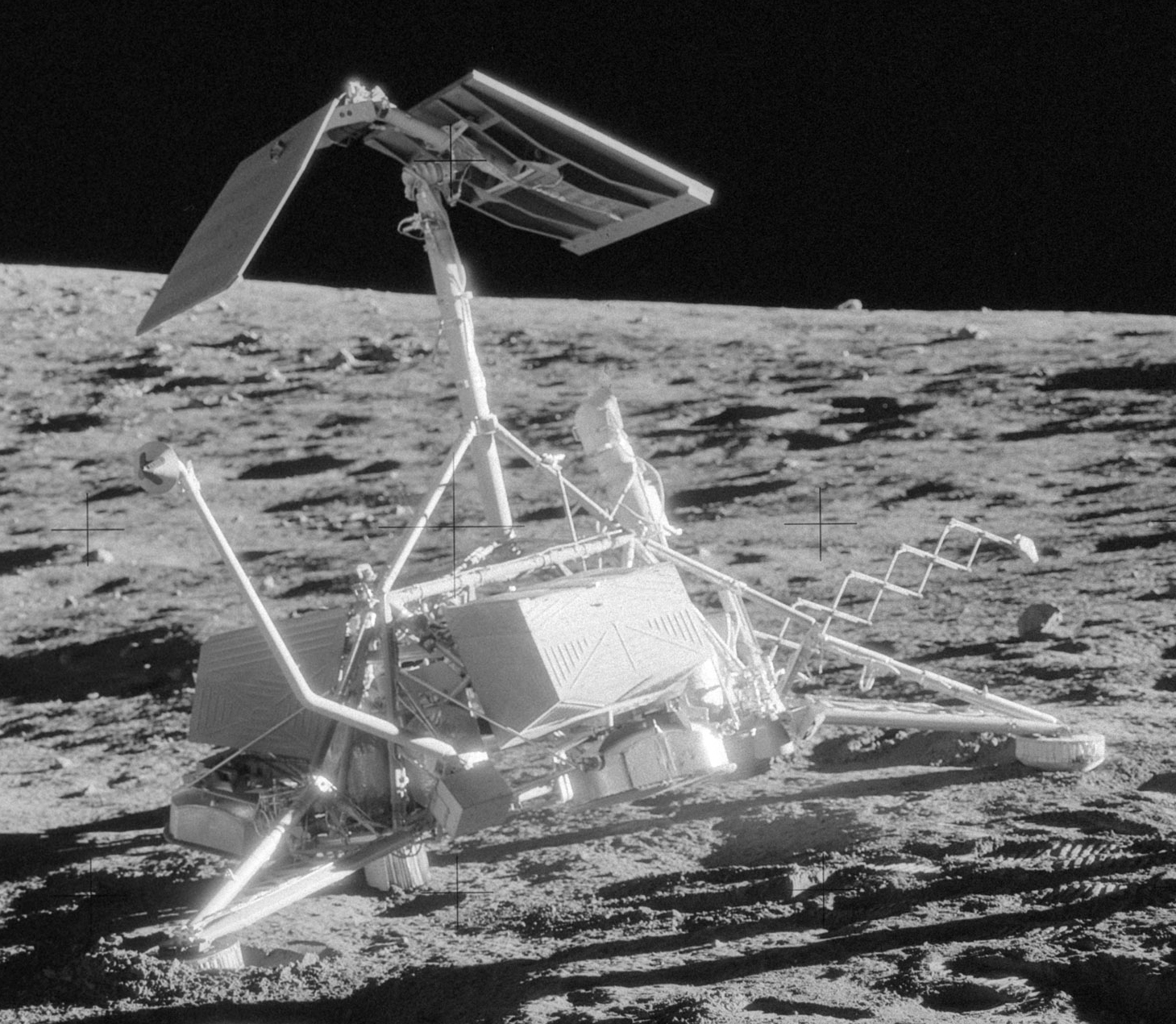The Surveyors were a series of robotic landers managed by the Jet Propulsion Laboratory designed to make soft landings on the Moon to study lunar surface properties and to act as precursors for future human landings. They provided ground-level information at potential Apollo landing sites that combined with orbital imagery from Lunar Orbiters increased our knowledge of the Moon in preparation for human missions.
Surveyor 6, the sixth in a series of seven spacecraft, launched from Cape Canaveral on an Atlas-Centaur rocket on November 7, 1967, and landed successfully on the Moon three days later in the Sinus Medii, in the center of the Moon’s visible hemisphere. It began sending back images of its landing site and analyzing the lunar soil’s composition.
On November 17, as an engineering test to see if its rockets could be restarted on the Moon, Surveyor’s engines fired for 2.5 seconds, lifting the spacecraft 12 feet high and moving it 8 feet west of its original landing site, in the first powered liftoff from another celestial body. By the time its mission ended on December 14, 1967, Surveyor 6 had returned approximately 30,000 pictures of itself and its surroundings and studied the chemical composition of the lunar surface.
The results of the experiments showed that the surface had a basaltic composition, similar to that found at the
Surveyor 5 landing site, indicating that lunar maria shared similar geologic histories. Engineering and soil mechanics data confirmed findings from earlier Surveyors that the bearing strength of the surface was more than adequate to support human landings.
In February 1968, the NASA Apollo Site Selection Board chose an area near Surveyor 6’s location as one of five potential landing zones for the first manned mission, meeting suitability criteria such as smooth flat terrain and a clear approach path. With Surveyor 6, the survey of potential landing areas for Apollo was completed, allowing Surveyor 7, the last in the series scheduled to fly in January 1968, to be targeted to a more scientifically diverse site: the crater Tycho. Surveyor 6 brought NASA one step closer to achieving the Moon landing before the end of the decade.





























